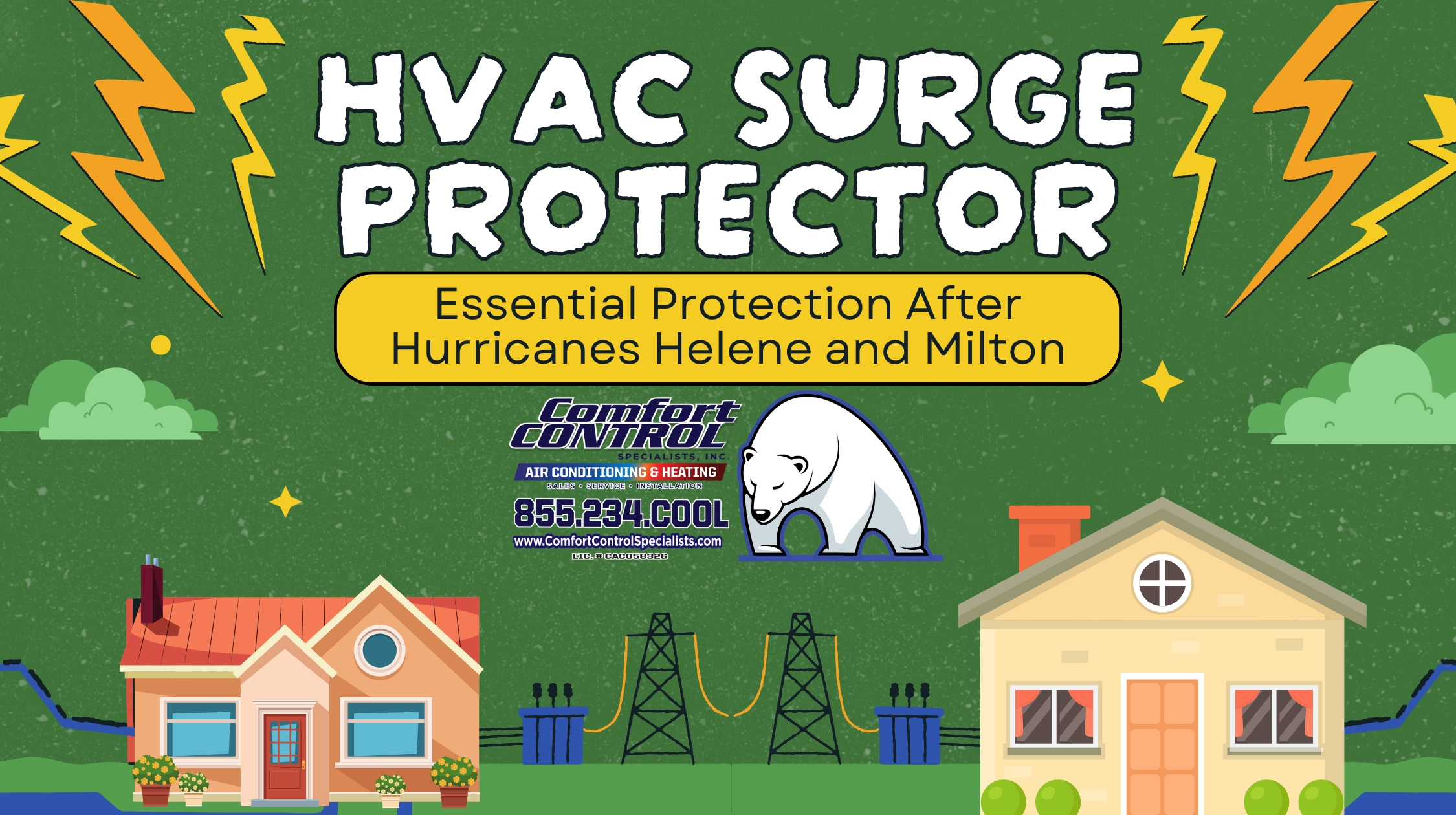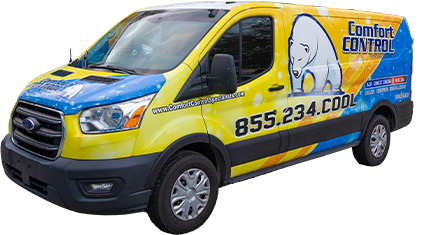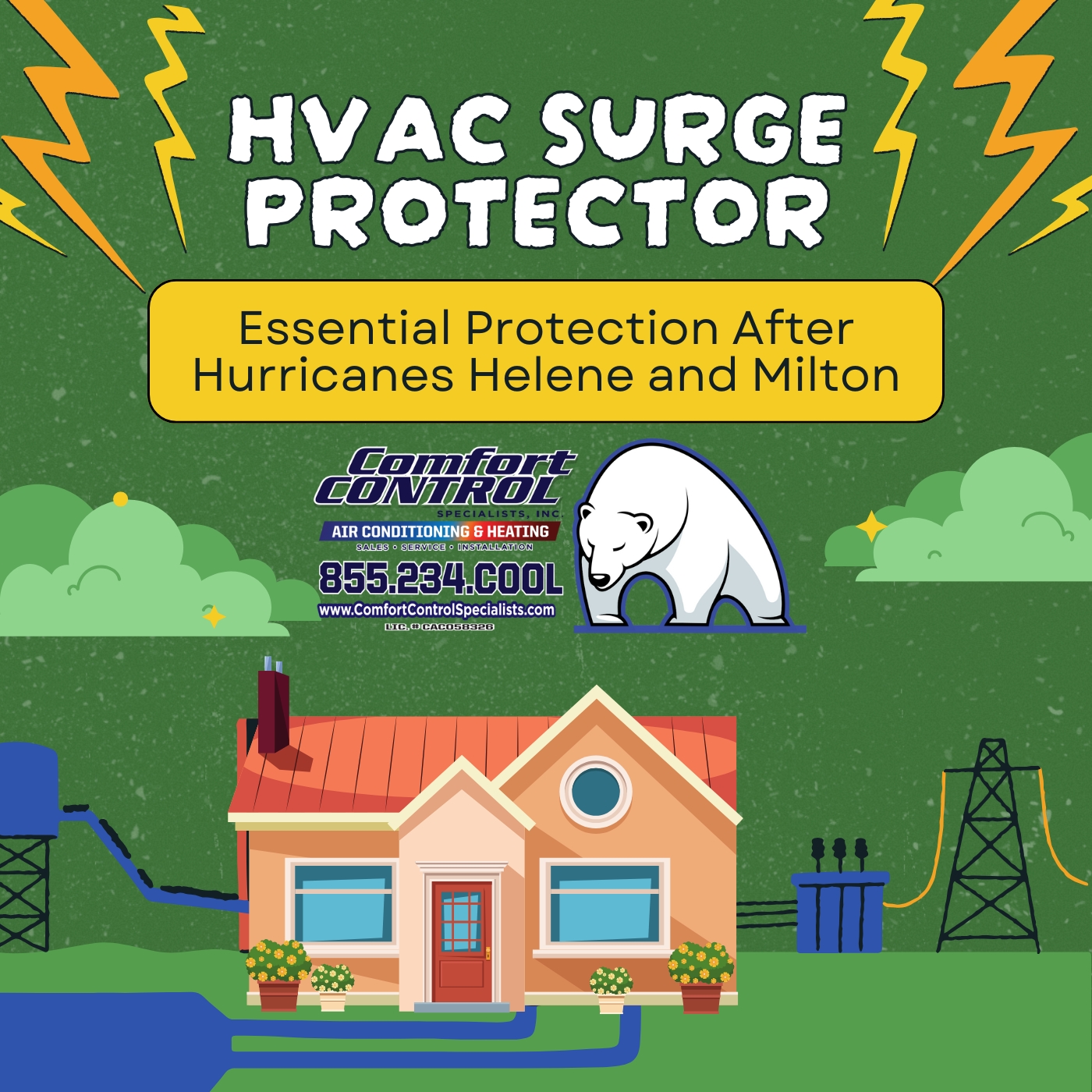
HVAC Surge Protector: Essential Protection After Hurricanes Helene and Milton
The recent devastation from Hurricanes Helene and Milton has reminded Floridians of the importance of protecting their homes and appliances from storm damage. While most homeowners focus on roof repairs and flood protection, many overlook one critical area—HVAC systems. Air conditioners are especially vulnerable to electrical surges, yet insurance coverage can vary, with some providers refusing to classify HVAC systems as appliances.
In this post, we’ll explore:
- How electrical surges affect HVAC systems
- Different types of surge protection for your home
- Why post-storm inspections are essential for HVAC longevity
- The importance of confirming insurance coverage for surge damage
At Comfort Control Specialists, we’re committed to helping homeowners protect their systems and extend the lifespan of their HVAC units. Let’s dive into why surge protection is essential and how you can safeguard your investment.
Understanding HVAC Surge Damage After Hurricanes Helene and Milton
During hurricanes, power surges and grid fluctuations are common. Electrical surges can occur when:
- Lightning strikes the power grid or a nearby transformer.
- Utility companies restore power after an outage.
- A storm causes power lines to fall, leading to electrical instability.
Your HVAC system is especially vulnerable to surges because it contains numerous delicate electronic components. Even a momentary voltage spike can burn out key parts like:
- Compressor Motors: Surges can fry the compressor, which is the heart of the AC system, resulting in costly repairs.
- Control Boards and Thermostats: Electrical surges can cause these sensitive components to malfunction, making it impossible for your AC to run correctly.
- Capacitors and Relays: These small but vital components help the system start and run efficiently. Surges can cause them to fail suddenly, leaving your AC unable to operate.
- Fan Motors: The condenser and blower fan motors are especially vulnerable to voltage spikes, leading to mechanical issues.
The saltwater exposure and debris damage common during hurricanes can also corrode metal parts, further stressing the system. A power surge, even if it doesn’t immediately shut down the AC, can leave the system compromised and prone to failure.
Types of Surge Protection for Your Home
To fully protect your HVAC system and other electronics from power surges, it’s essential to install multiple layers of surge protection. Here’s a breakdown of the different types available:
1. Whole-House Surge Protectors
Installed directly at your home’s main electrical panel, whole-house surge protectors guard all electrical circuits and connected devices from surges originating outside the home—such as lightning strikes or power grid issues.
- How It Works: This device diverts excess electrical energy to the ground before it can enter your home’s wiring.
- HVAC Impact: While whole-house protectors reduce the risk of large surges affecting your HVAC system, smaller localized surges can still occur.
- Maintenance: These devices may need to be inspected periodically to ensure they are functioning properly.
2. Point-of-Use Surge Protectors
These protectors plug directly into individual outlets and are commonly used for small electronics such as TVs, computers, and appliances.
- How It Works: Point-of-use surge protectors absorb small electrical spikes at the outlet, preventing them from damaging the connected device.
- HVAC Impact: While useful for household electronics, these devices aren’t effective at protecting larger appliances or HVAC systems.
3. HVAC Surge Protectors
These surge protectors are installed directly on the condenser unit or air handler to provide targeted protection.
- How It Works: HVAC surge protectors monitor electrical voltage and instantly divert excess energy away from critical components, such as compressors and motors.
- Why It’s Essential: These protectors shield your system from both major surges and minor fluctuations, extending the lifespan of your HVAC unit.
- Professional Installation: An HVAC surge protector must be installed by a licensed technician to ensure compatibility with your system. Call the Contact the Comfort Control Specialists for guidance and installation.
4. Electrical Panel Surge Protectors with HVAC Integration
Some whole-house surge protectors come with dedicated connections for HVAC systems, providing an extra layer of protection.
- How It Works: These surge protectors are integrated into your electrical panel with a specific focus on high-voltage systems, such as HVAC units.
- HVAC Impact: This type of protection works alongside a dedicated HVAC surge protector to minimize risks from both external and internal power surges.
Pro Tip: The best approach is to combine multiple layers of surge protection—whole-house surge protectors to block external surges and HVAC-specific devices to shield your air conditioning unit.
Confirming Insurance Coverage for HVAC Systems
While installing surge protection is essential, it’s also important to understand your insurance policy. Not all insurance providers classify HVAC systems as appliances, and coverage for storm-related electrical damage can vary.
What Should You Check in Your Policy?
- Appliance Coverage: Does your policy explicitly list HVAC systems under appliance protection?
- Surge and Electrical Damage Coverage: Is electrical surge damage included in your policy, or does it require additional coverage?
- Neglect Exclusions: Some insurers may deny claims if damage is due to lack of maintenance or improper installation.
Always consult your insurance agent or policy provider to understand what is covered under your plan and if surge protection devices qualify you for discounts or additional coverage.
The Importance of Professional HVAC Inspections
Even if your HVAC system seems to be working after a storm, hidden issues may develop over time due to electrical surges, debris impact, or flood exposure. Scheduling a professional inspection ensures that any problems are identified early, preventing more significant breakdowns down the road.
At Comfort Control Specialists, our licensed technicians perform thorough inspections to:
- Test electrical components like compressors, fan motors, and control boards for hidden surge damage.
- Check refrigerant levels to ensure your system is running efficiently.
- Clear debris from condenser coils, improving airflow and reducing wear on your system.
- Inspect for corrosion or rust, which can cause long-term damage to the unit.
By catching issues early, we can make necessary repairs to extend the lifespan of your system and prevent unexpected breakdowns.
Benefits of Installing an HVAC Surge Protector
Protecting your HVAC system with a surge protector offers several benefits:
- Prevents Costly Repairs: Avoid expensive repairs by shielding critical components from power surges.
- Extends System Lifespan: Surge protection reduces electrical wear and tear, helping your HVAC system last longer.
- Peace of Mind: During Florida’s storm season, you can rest easy knowing your air conditioner is protected.
- Potential Insurance Discounts: Some insurers offer discounts for homes with surge protection systems installed.
Contact Comfort Control Specialists for Your HVAC Needs
Living in Florida means preparing for storms and protecting your home from electrical surges. At Comfort Control Specialists, we specialize in HVAC maintenance, surge protector installation, and post-storm inspections. Whether you need a new surge protector
Contact the Comfort Control Specialists for all of your HVAC installing, repair, and maintenance needs. We’d be happy to answer any questions about how a new air conditioning system can help increase your resale and property value.



